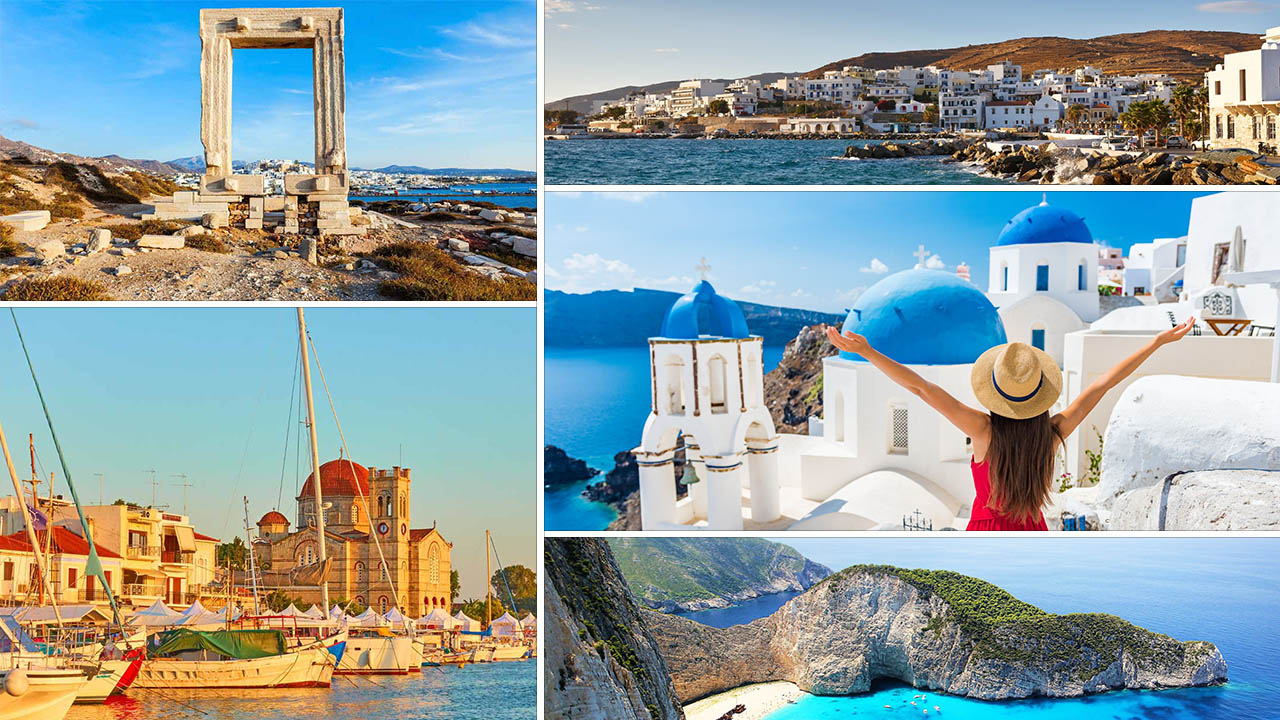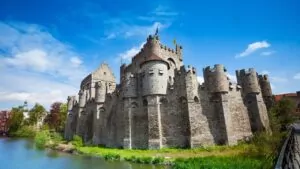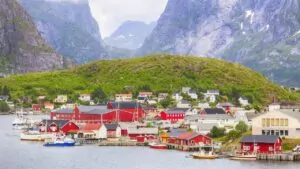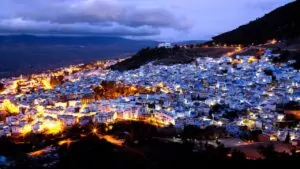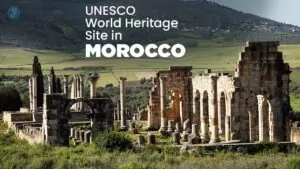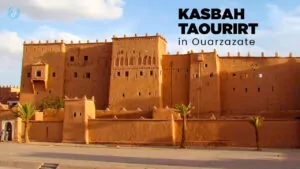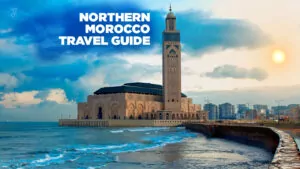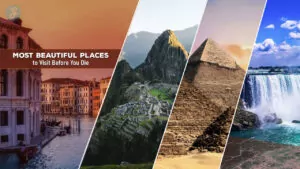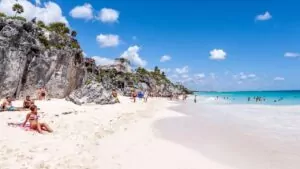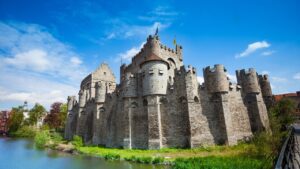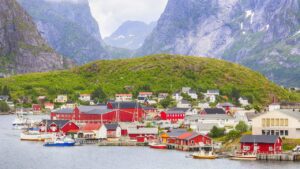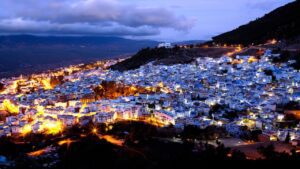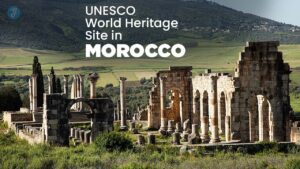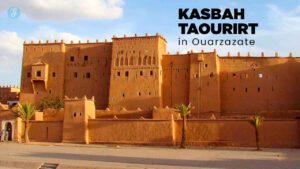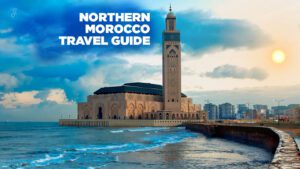Greece, a country steeped in history and blessed with natural beauty, offers travelers a wealth of stunning destinations to explore. From ancient ruins to pristine beaches and charming villages, the Greek landscape is a treasure trove of unforgettable sights. This guide will show you 15 of Greece’s most beautiful summer destinations.
This guide will help you plan your Greek adventure by highlighting 15 of the most beautiful and captivating places to visit. We’ll explore iconic islands, hidden gems, and mainland wonders that showcase the best of what Greece has to offer.
1. Santorini
Santorini is perhaps the most famous and instantly recognizable Greek island. Known for its stunning sunsets and white-washed buildings with blue domes, Santorini is a must-visit destination for any traveler to Greece.
Key attractions:
- Oia: This picturesque village is famous for its sunset views and charming architecture.
- Fira: The island’s capital offers excellent shopping, dining, and panoramic views of the caldera.
- Red Beach: A unique beach with red volcanic sand and towering red cliffs.
- Ancient Akrotiri: An archaeological site often called the “Minoan Pompeii” due to its well-preserved ruins.
A massive volcanic eruption around 1600 BCE formed Santorini’s unique landscape. The island’s crescent shape hugs a vast caldera, creating dramatic cliffs that plunge into the Aegean Sea. This geological wonder provides a stunning backdrop for your vacation photos.
For wine enthusiasts, Santorini offers a treat. The island’s volcanic soil and unique climate produce distinctive wines, particularly the crisp, mineral-rich Assyrtiko. Many local wineries offer tours and tastings, allowing visitors to sample these unique vintages while enjoying breathtaking views.
2. Mykonos
Mykonos is renowned for its vibrant nightlife, beautiful beaches, and iconic windmills. This cosmopolitan island attracts visitors from all over the world with its blend of natural beauty and pulsating energy.
Key attractions:
- Little Venice: A charming neighborhood with colorful houses right on the water’s edge.
- Windmills: The island’s famous 16th-century windmills offer a glimpse into its past and provide great photo opportunities.
- Paradise and Super Paradise Beaches: Known for their crystal-clear waters and lively atmosphere.
- Delos: A nearby island and UNESCO World Heritage site, home to important archaeological ruins.
Mykonos Town, also known as Chora, is a maze of narrow streets lined with white-washed buildings, blue-domed churches, and purple bougainvillea. Getting lost in these winding alleys is part of the Mykonos experience, as you never know what charming shop, cafe, or view you might stumble upon.
For those interested in Greek mythology, a day trip to the nearby island of Delos is a must. According to legend, this is the birthplace of Apollo and Artemis. The archaeological site is one of the most important in Greece, offering a fascinating glimpse into ancient Greek history and culture.
3. Athens
No trip to Greece would be complete without a visit to its capital, Athens. This historic city is a unique blend of ancient wonders and modern urban life.
Key attractions:
- The Acropolis: This ancient citadel is home to several significant archaeological sites, including the Parthenon.
- Ancient Agora: Originally the heart of ancient Athens, this site provides a glimpse into daily life in classical times.
- Plaka: A charming old neighborhood perfect for wandering, shopping, and dining.
- National Archaeological Museum: Home to some of the most important artifacts from Greek antiquity.
The Acropolis, visible from almost everywhere in the city, is Athens’ crowning glory. This ancient citadel has stood watch over Athens for millennia and continues to inspire awe in visitors today. The Parthenon, its most famous structure, is considered the epitome of classical Greek architecture.
But Athens is not just about ancient history. The city has a vibrant contemporary culture, with a thriving arts scene, excellent restaurants, and lively neighborhoods. Areas like Psyrri and Gazi have transformed from industrial zones into hip districts full of bars, restaurants, and street art.
For a taste of local life, visit the Central Market. This bustling marketplace is where Athenians shop for fresh produce, meat, and fish. The sights, sounds, and smells offer an authentic slice of Greek daily life.
4. Meteora
Meteora is a truly unique and awe-inspiring destination. This UNESCO World Heritage site features massive rock formations topped with centuries-old monasteries.
Key attractions:
- The Monasteries: Six functioning Eastern Orthodox monasteries perched atop towering rock pillars.
- Hiking trails: Numerous paths offer stunning views of the landscape and monasteries.
- Rock climbing: For the adventurous, Meteora offers world-class climbing opportunities.
- Kalambaka: The nearby town is a wonderful base for exploring the area and offers insights into local life.
Meteora’s monasteries seem to defy gravity, clinging to the tops of towering rock pillars. Built between the 14th and 16th centuries, these monasteries were once accessible only by long ladders or baskets pulled up by ropes. Today, steps carved into the rock make them more accessible, but they still inspire a sense of wonder and spiritual awe.
Each monastery has its own history and architectural style. The Great Meteoron, founded in the 14th century, is the largest and most popular. Its museum houses an impressive collection of manuscripts, icons, and other religious artifacts.
Earthquakes and weathering over millions of years created the unique geological formations of Meteora. The result is a landscape that looks almost otherworldly, especially when shrouded in mist.
5. Zakynthos
Zakynthos, also known as Zante, is a stunning Ionian island famous for its turquoise waters, dramatic cliffs, and the iconic Navagio Beach.
Key attractions:
- Navagio Beach (Shipwreck Beach): A secluded cove with a shipwreck on the shore, surrounded by towering cliffs.
- Blue Caves: These sea caves, known for their striking blue color, are best explored by boat.
- Laganas Beach: A long, sandy beach known for nesting loggerhead sea turtles.
- Bohali Castle: Offering panoramic views of Zakynthos Town and the sea.
Navagio Beach, often called Shipwreck Beach, is one of the most photographed beaches in Greece. The rusting shipwreck on its white sands, set against the backdrop of towering limestone cliffs and crystal-clear waters, creates a stunning scene. While the beach itself is only accessible by boat, the view from the clifftop lookout is equally breathtaking.
Zakynthos is also known for its rich marine life. The island is a crucial nesting site for loggerhead sea turtles (Caretta caretta). During the summer months, you can take boat tours to spot these magnificent creatures in their natural habitat. The National Marine Park of Zakynthos works to protect these endangered turtles and their nesting grounds.
The Blue Caves, located on the northern tip of the island, are another natural wonder. The water inside these sea caves has a striking blue color due to light refraction. Boat tours allow you to explore these caves and even swim in their azure waters.
6. Delphi
Delphi, once considered the center of the world by the ancient Greeks, is a must-visit destination for history enthusiasts and those seeking breathtaking mountain scenery.
Key attractions:
- Temple of Apollo: The ancient sanctuary’s centerpiece, where the famous Oracle of Delphi once prophesied.
- Ancient Theater: A well-preserved theater with stunning views of the valley below.
- Delphi Archaeological Museum: This site houses important artifacts, including the famous Charioteer of Delphi.
- Castalian Spring: A sacred spring where visitors to the ancient sanctuary purified themselves.
In ancient times, Delphi was considered the world’s navel and was home to the most important oracle in the classical Greek world. People would travel from all over the Mediterranean to consult the Oracle of Delphi on important decisions.
Built on the slopes of Mount Parnassus, the archaeological site offers spectacular views of the surrounding olive groves and the Gulf of Corinth in the distance. The combination of historical significance and natural beauty makes Delphi a truly awe-inspiring place to visit.
The Delphi Archaeological Museum is a crucial stop to fully appreciate the site. It houses many of the treasures uncovered during excavations, including the famous bronze Charioteer of Delphi, a masterpiece of ancient Greek sculpture.
7. Nafplio
Nafplio, the first capital of modern Greece, is a charming coastal town in the Peloponnese region. With its elegant architecture, seaside promenade, and imposing fortresses, Nafplio offers a perfect blend of history and relaxation.
Key attractions:
- Palamidi Fortress: A Venetian fortress overlooking the town, offering panoramic views.
- Bourtzi Castle: a small fortress on an islet in the harbor.
- Old Town: Narrow streets lined with neoclassical mansions, shops, and tavernas.
- Arvanitia Beach: A pebble beach with views of the Argolic Gulf is perfect for swimming.
Nafplio’s old town is a delight to explore, with its narrow alleys, colorful bougainvillea-draped houses, and hidden squares. The town’s architecture reflects its varied history, with influences from the Venetians, Ottomans, and neo-classical period all visible.
For history buffs, Nafplio is an excellent base for exploring the nearby ancient sites of Mycenae and Epidaurus. Mycenae, the legendary home of Agamemnon, features imposing Cyclopean walls and the famous Lion Gate. Epidaurus is home to one of the best-preserved ancient theaters in Greece, known for its perfect acoustics.
Don’t miss the opportunity to climb the 999 steps to Palamidi Fortress. The views from the top are well worth the effort, offering a panoramic vista of the town, the sea, and the surrounding mountains.
8. Crete
Crete, the largest Greek island, is a world unto itself. With its diverse landscapes, rich history, and distinct culture, Crete offers enough attractions to fill an entire vacation.
Key attractions:
- Palace of Knossos: The largest Bronze Age archaeological site on Crete, center of Minoan civilization.
- Elafonisi Beach: A stunning pink sand beach on the southwestern coast.
- Samaria Gorge: One of Europe’s longest canyons, offering a challenging but rewarding hike.
- Chania Old Town: A picturesque harbor town with Venetian and Ottoman influences.
Crete’s history stretches back to the Minoan civilization, one of Europe’s earliest advanced societies. The Palace of Knossos, near Heraklion, offers a fascinating glimpse into this ancient world. The site’s colorful frescoes and intricate architecture hint at the sophistication of Minoan culture.
The island’s diverse landscape includes everything from pristine beaches to rugged mountains. Many people often rank Elafonisi Beach among the world’s most beautiful beaches due to its pink-tinged sand and turquoise waters. For nature lovers, the Samaria Gorge provides a challenging 16-kilometer hike through stunning scenery.
Cretan cuisine is a highlight of any island visit. Known for its use of fresh, local ingredients, Cretan food is considered one of the healthiest diets in the world. Don’t miss trying local specialties like dakos (a Cretan salad), kalitsounia (cheese pies), and, of course, plenty of olive oil.
9. Rhodes
Rhodes, the largest of the Dodecanese islands, is known for its beach resorts, ancient ruins, and remnants of its occupation by the Knights of St. John during the Crusades.
Key attractions:
- Rhodes Old Town: A UNESCO World Heritage site, one of the best-preserved medieval towns in Europe.
- Palace of the Grand Master: A stunning castle-like building in the Old Town.
- Lindos: A picturesque village crowned by an ancient Acropolis.
- Valley of the Butterflies: A unique nature reserve that’s home to thousands of butterflies in summer.
Rhodes Old Town is a maze of cobblestone streets, medieval buildings, and Ottoman minarets. The Street of the Knights, lined with the former residences of the Knights of St. John, is particularly impressive. At the top of this street stands the Palace of the Grand Master, a formidable fortress that now houses a museum.
Lindos, on the east coast of the island, offers a perfect blend of history and beach life. The white-washed village sits beneath an ancient acropolis, which offers stunning views over the surrounding coastline. The village itself is a joy to explore, with its narrow alleys and traditional captain’s houses.
For nature lovers, the Valley of the Butterflies is a unique attraction. During the summer months, thousands of butterflies gather in this lush valley, creating a magical atmosphere. The site also features walking trails and a small natural history museum.
10. Corfu
Corfu, an island in the Ionian Sea, stands out for its lush greenery, beautiful beaches, and strong Venetian influence.
Key attractions:
- Corfu Old Town: A UNESCO World Heritage site with a mix of Venetian, French, and British architecture.
- Achilleion Palace: A neoclassical palace built for Empress Elisabeth of Austria.
- Canal d’Amour: A unique rock formation creating a narrow channel of turquoise water.
- Mount Pantokrator: The highest point on the island, offering panoramic views.
Corfu Town, the island’s capital, is a delightful mix of architectural styles reflecting its varied history. The Old Fortress and New Fortress, both Venetian constructions, stand guard over the town. The Liston, an arcaded street lined with cafes, is perfect for people-watching and soaking up the atmosphere.
The island’s interior is surprisingly green and lush, dotted with olive groves and cypress trees. This verdant landscape has earned Corfu the nickname “Emerald Isle.” Hiking trails crisscross the island, offering opportunities to explore its natural beauty.
Corfu’s beaches range from popular, well-equipped stretches of sand to secluded coves accessible only by boat. The west coast tends to have sandier beaches, while the east coast features more pebble beaches with calmer waters.
11. Naxos
Naxos, the largest of the Cyclades islands, offers a perfect blend of beautiful beaches, mountain villages, and ancient ruins.
Key attractions:
- Portara: The massive marble gate of an unfinished temple to Apollo.
- Plaka Beach: A long stretch of golden sand, perfect for swimming and windsurfing.
- Mount Zas is the highest peak in the Cyclades, offering hiking opportunities and panoramic views.
- Chora (Naxos Town): The main town, with its imposing Venetian castle and maze-like streets.
Naxos is less crowded than some of its more famous neighbors, making it a perfect destination for those seeking a more relaxed Greek island experience. Beautiful beaches line the island’s west coast, including the popular Plaka Beach, renowned for its golden sand and crystal-clear waters.
The interior of Naxos is mountainous and dotted with traditional villages. A drive through the center of the island reveals a different side of Greek island life, with old stone houses, Byzantine churches, and olive groves. The village of Apeiranthos, with its marble-paved streets and Venetian towers, is particularly worth a visit.
Naxos is also known for its local products, particularly its cheeses, potatoes, and kitron (a citrus liqueur). Be sure to try some of these local specialties in the island’s tavernas.
12. Milos
Milos, a volcanic island in the Cyclades, is known for its stunning beaches, colorful fishing villages, and otherworldly landscapes.
Key attractions:
- Sarakiniko Beach: A unique, moon-like landscape of white volcanic rock formations.
- Kleftiko: A series of striking rock formations and sea caves, accessible by boat.
- Plaka: The charming capital of Milos, with traditional Cycladic architecture.
- Catacombs of Milos: ancient underground Christian tombs.
Milos is perhaps best known for its stunning and diverse beaches. Sarakiniko Beach, with its smooth white volcanic rocks contrasting against the turquoise sea, looks like a landscape from another planet. It’s one of the most photographed places in the Cyclades.
The island’s volcanic past has created a variety of colorful beaches, from the red cliffs of Paleochori to the white stones of Sarakiniko. Firiplaka Beach, with its multi-colored cliffs, is another must-visit spot.
Milos is also famous for being the discovery site of the Venus de Milo, which is now housed in the Louvre. The island has a rich mining history, which you can explore at the Mining Museum in Adamas, the main port town.
For a taste of traditional island life, visit the fishing village of Klima. Its colorful syrmata (boat houses) lining the waterfront make for a picturesque scene, especially at sunset.
13. Hydra
Hydra, a small island in the Saronic Gulf, is known for its preserved architecture, car-free streets, and artistic atmosphere.
Key attractions:
- Hydra Town: The island’s picturesque port and main settlement.
- Profitis Ilias Monastery: Offering panoramic views of the island and surrounding sea.
- Beaches: While mostly rocky or pebbly, beaches like Vlychos and Plakes Vlychou are beautiful spots for swimming.
- Historical Archives Museum: Housed in an elegant mansion, it tells the story of Hydra’s maritime history.
One of Hydra’s most distinctive features is its lack of motorized vehicles. The main mode of transport on the island is by foot, boat, or donkey, giving Hydra a peaceful, old-world charm.
Hydra Town, with its 18th-century mansions rising above the horseshoe-shaped harbor, is one of the most beautiful port towns in Greece. The town has long been a favorite retreat for artists, writers, and musicians, contributing to its bohemian atmosphere.
Despite its small size, Hydra has played an important role in Greek history. The island was a significant naval power during the Greek War of Independence in the 19th century. Today, we can admire the preservation of many of the grand captain’s mansions from this era.
While Hydra doesn’t have the expansive sandy beaches found on some other Greek islands, it does offer beautiful swimming spots. Many locals and visitors enjoy diving off the rocks around the port or taking water taxis to nearby coves.
14. Monemvasia
Monemvasia, located in the southeastern Peloponnese, is a remarkable medieval fortress town perched on a rock jutting out into the sea.
Key attractions:
- The Castle Town: A beautifully preserved medieval settlement.
- Christos Elkomenos Church: A 13th-century Byzantine church in the lower town.
- Upper Town: Ruins of the old upper town, including the church of Agia Sofia.
- Beaches: Nearby beaches, such as Pori, provide a chance to unwind after exploring the town.
A narrow causeway connects Monemvasia to the mainland, earning it the nickname “Gibraltar of the East”. The medieval town is invisible from the mainland, adding to its air of mystery and seclusion.
The lower town is a maze of narrow cobblestone streets, restored stone houses, and Byzantine churches. Walking through these streets feels like stepping back in time. Visitors can stay within the castle walls thanks to the conversion of many old houses into boutique hotels.
A steep and winding path leads to the upper town, which is mostly in ruins but offers breathtaking views of the lower town and the surrounding sea. The 12th-century church of Agia Sofia, perched on the edge of a cliff, is one of the few intact structures in the upper town.
Monemvasia is also known for its local wine, Malvasia. Local producers have recently revived this sweet wine, which was famous during medieval times.
15. Papingo
Papingo, located in the Zagori region of northwestern Greece, is a cluster of traditional mountain villages set against the backdrop of the Pindus Mountains.
Key attractions:
- Stone Architecture: Beautifully preserved traditional stone houses and bridges.
- Vikos Gorge: one of the world’s deepest canyons, offering spectacular hiking opportunities.
- Ovires: Natural rock pools perfect for a refreshing dip in summer.
- Voidomatis River: Known for its crystal-clear waters, ideal for rafting.
Papingo actually consists of two villages: Megalo (big) Papingo and Mikro (small) Papingo. Both villages showcase the traditional architecture of the region, with stone-built houses, cobblestone streets, and slate roofs.
The surrounding Vikos-Aoos National Park is a paradise for nature lovers and outdoor enthusiasts. The Vikos Gorge, listed in the Guinness Book of Records as the world’s deepest canyon in proportion to its width, offers some of the most spectacular hiking in Greece.
In summer, the natural rock pools known as Ovires, formed by the Rogovo stream, provide a refreshing spot to cool off. The bravest can even slide down the smooth rocks between the pools.
The Zagori region is also known for its stone bridges, many dating back to the 18th and 19th centuries. These bridges, along with the cobblestone paths connecting the villages, form a network known as the Skala of Vradet.
Conclusion
Greece’s beauty is as diverse as it is stunning. From the iconic whitewashed buildings of Santorini to the rugged mountains of Zagori, from the ancient ruins of Athens to the pristine beaches of the islands, Greece offers a wealth of experiences for every type of traveler.
Greece has a way of capturing the hearts of its visitors, often leading to return trips to explore more of what this incredible country has to offer. Whether this is your first trip to Greece or your tenth, these beautiful destinations are sure to create lasting memories and perhaps inspire future adventures in the land where western civilization began.

